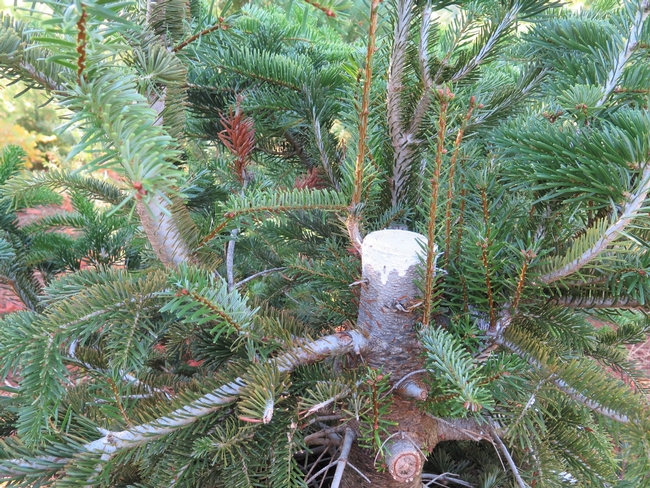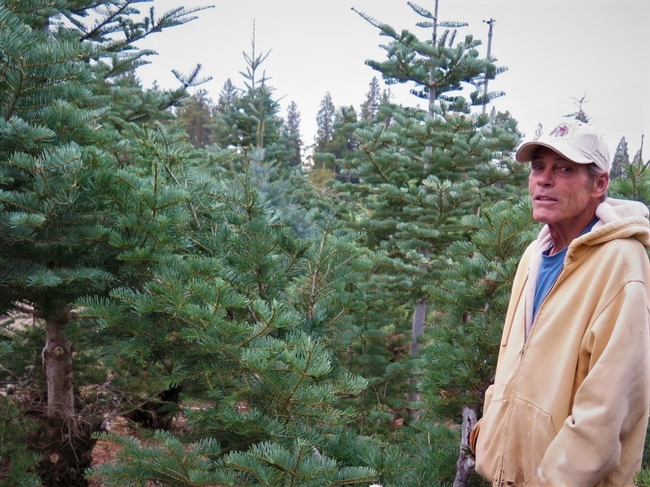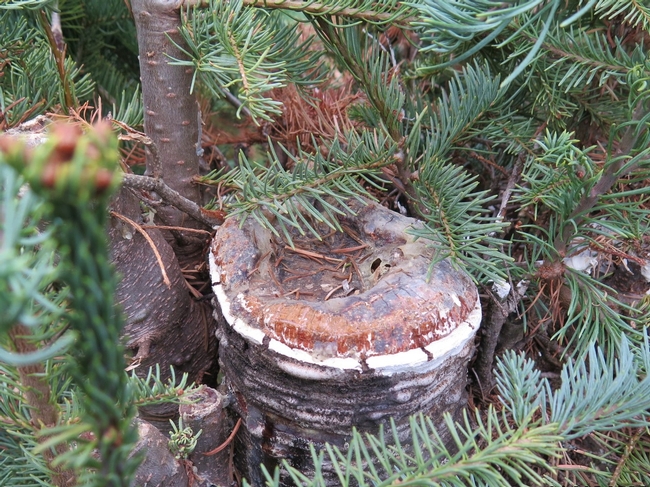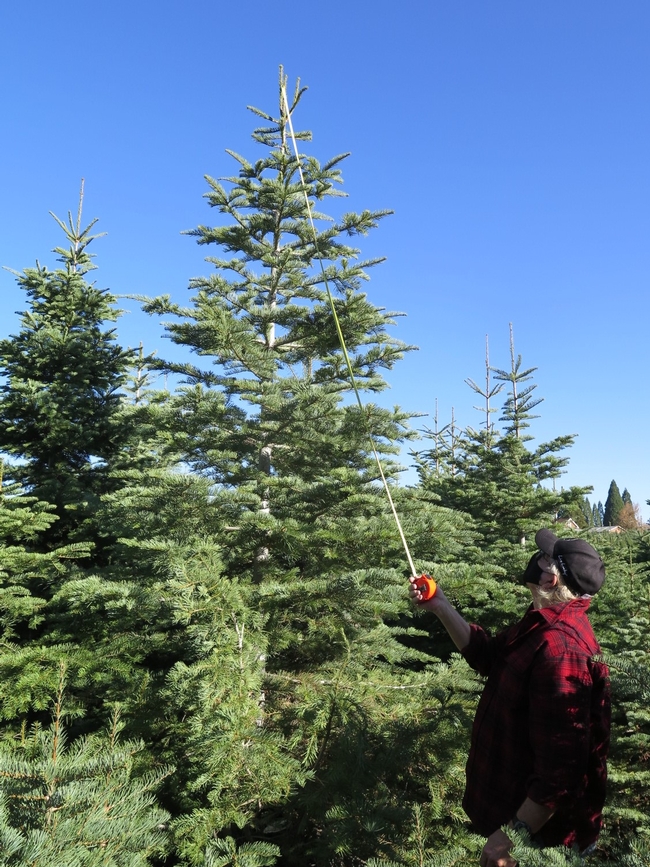Stump cultured trees regrow from either turned up limbs or new sprouts.
The holidays are here Fodder Family! For those of you who enjoy a living Christmas tree, perhaps you will try a stump cultured tree this year from one of the many
foothill Christmas tree farms. I often am asked which is more environmentally sustainable, a live Christmas tree or an artificial tree? A
Canadian study found that REAL trees, though not perfect, have fewer impacts on climate change and resource depletion than artificial trees. Stump culture is the practice of cutting a tree leaving the stump with whorls of lower branches to regenerate new sprouts that will grow into a harvestable tree. It is an old technique (
coppicing, a similar practice used in European woodlands, is thought to be thousands of years old) that can provide Choose n' Cut Christmas tree growers with several harvests off of the same stump, saving time and money, and using fewer resources. Some consumers like the stump culture concept since they consider the tree is not “killed”, it is “renewed”.
Mike McGee grows Christmas trees in El Dorado county and has been using stump culture on his 19 acre Choose n' Cut Farm for 36 years. According to Mike, stump culture reduces the time to harvest for a White Fir from 8-10 years to 5-7 years. One stump can provide as many as eight harvested trees.
If you want a Christmas tree from McGee Tree Farm, you'd better plan on getting it early. Located at 3,000 feet elevationthe farm sells out every year, often just after the Thanksgiving weekend. Mike, who learned from his Dad Omar McGee-a Christmas Tree grower pioneer in the region, grows a wide selection of White, Noble, ‘Silver Tip' (Red), Canaan,
Nordmann and Turkish “true” fir (
Abies sp.), and Douglas fir (
Pseudotsuga sp.), all using stump culture.
For those of you who think growing Christmas trees is as easy as planting a few conifers and forgetting about them, beware. Christmas tree production and stump culture takes work to produce a good looking tree. The cut, number of nurse branches, and selection of final tree sprout all affect the resulting success and tree quality. McGee goes back to each harvested stump in January and recuts the stump using a sharp saw to produce a clean cut. He then paints the stump using a 4 inch roller and an elastomeric coating, which is dense and will stretch. The coating helps to prevent the stump from rotting until the tree's nature sap overgrows it, sealing the stump.
The bigger the tree stump, the more nurse branches that are left. Typically this means leaving 10-12 branches around a white fir. New trees will grow up from either a nurse branch limb that turns up-not desirable due to the bend in the bottom- or a new sprout which will grow straighter, and is therefore more desirable than a tree grown from a turned up limb. The limbs fold up and shade the cut stump, nature's way of protecting the cuts that heal better when they have shade.
Nurse branches, left to providephotosynthates to the growing sprouts, are trimmed back but not completely removed as the sprouts grow up. Omar McGee referred to this as leaving a “bird's nest” owing to the look of the branches surrounding the bottom of the stump. Mike uses his experience to go through a process of elimination in determining which growing sprout to keep and when to cut the others, as competing branches and sprouts are gradually removed or cut back. He often begins by asking himself “What don't I want?” to prune off competing sprouts and eliminate misshapen stump trees.



